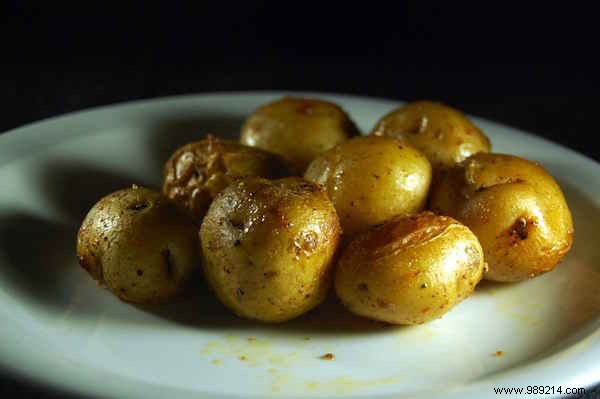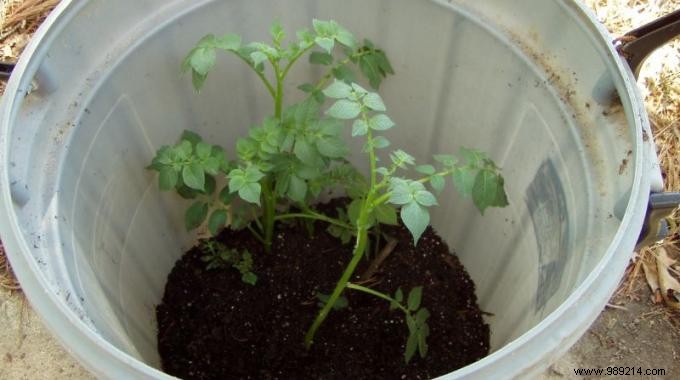
Gardening without a garden...
Simply using a container is not just for people who have limited space, as is the case in the city.
It can also be useful when you want to have more output, thanks to a more easily controlled environment.
Growing potatoes in a barrel has several advantages:
This reduces the amount of weeding, decreases exposure to pests and fungi.
In addition, you do not risk damaging the potatoes by digging the earth with a shovel to collect them.
Why ? Because all you have to do is turn the barrel upside down!
After doing extensive research on growing my own potatoes in a barrel, here are my recommendations.
It only takes 4 steps to successfully harvest:
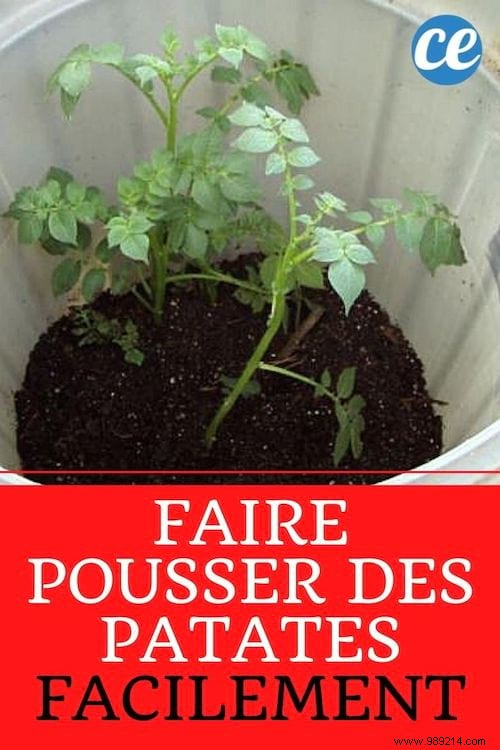

You will have to choose a container such as a 200 liter bin or one of those half barrels in the photo.
Another alternative is to use any container that has this type of volume.
The only condition is that the container already has holes or that you can make holes in it.
Next, you're going to have to clean the container with a bleach-based solution, to remove all the dirt that's been lying around.
For those who don't want to use bleach (like me, for example!), I recommend using a natural alternative to bleach like this one instead.
Good drainage is essential to keep potatoes healthy.
It is for this reason that you are going to have to drill a series of large holes in the lower sides and in the bottom of your container.
Another solution is to cut off the bottom of the container entirely and place the container on a well-drained surface, such as your garden soil.
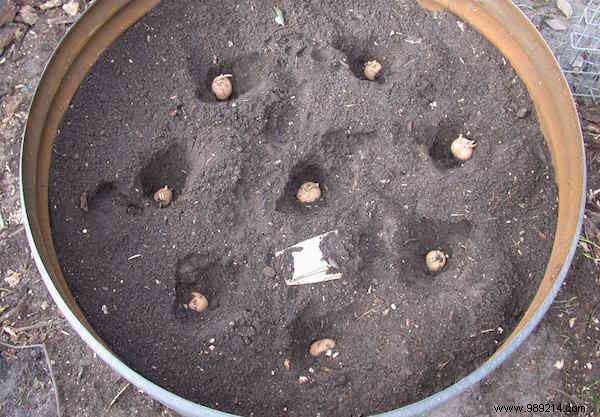
You can find seed potatoes in nurseries or on the Internet, on specialized sites like here.
For a quick start:Potato plants need to be sprouted. You can buy pre-germinated seedlings or sprout the seedlings yourself.
How? 'Or' What ? The trick is to place them in an egg carton, with the side with the most buds facing up.
Then, put the box in a temperate and bright room. Another solution is to put the tubers in an open paper bag.
Now fill the bottom of your container with about 15 cm of planting soil mix, which you will find in your usual gardening store, and compost (or manure).
If you find any, it is best to use a potting mix based on coconut fibers so that the soil is not too compact and can store enough moisture for the roots.
But in any case, know that potatoes adapt to any type of soil.
Then, add a few seed potatoes to this first layer of soil, spacing them well apart.
Cover the plants with a 2nd layer of 15 cm of your mixture of potting soil and compost.
Be careful not to compact the soil so that everything can breathe well.
Add water to moisten the soil. And above all, remember to keep the soil moist at all times, but without watering too much so as not to drown the plants.
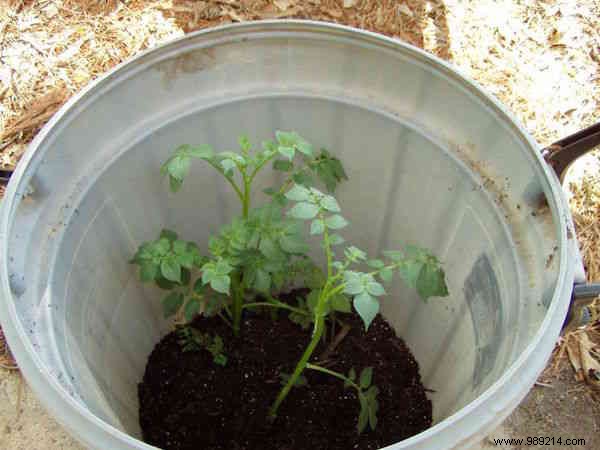
When the potato plants have between 15 to 20 cm of foliage, add a 3rd layer of your mix of potting soil and compost to cover 3/4 of the stems and visible foliage.
Repeat this step, letting the stems grow towards the top of the barrel, then covering them with soil as soon as they exceed 15 cm in height.
At the same time, do not forget to moisten the earth well as the seed potatoes grow.

After about 10 weeks, when the plant foliage begins to turn yellow, the potatoes should be ready to harvest.
Gently dig the soil with your hands into the barrel to check in the top layer if this is the case.
If you find the potatoes are indeed ripe, empty the barrel onto a tarp to uncover your loot.
After your 1st harvest, remember to save a few potatoes to use as plants the following year.
There you go, you will be able to taste your good big potatoes that you have grown yourself :-)
